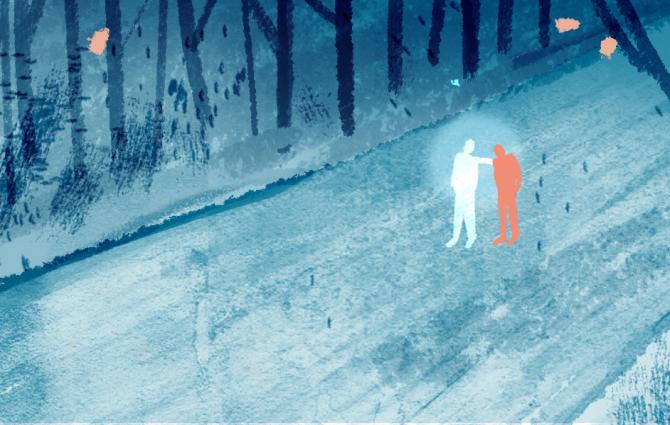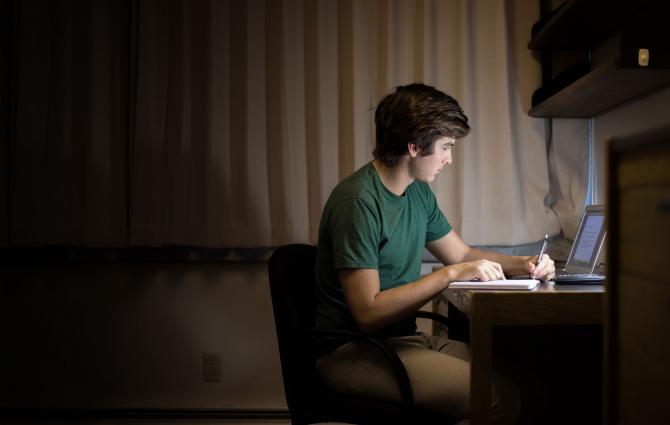In April 2017, UBC Vancouver installed a symbolic art piece: Reconciliation Pole. It represents the history of Indigenous people in Canada before, during, and after the Indian residential school era.
The Reconciliation Pole, installed on the southern end of campus near the Forestry building, encourages everyone who comes across it to learn more about the history of Indian residential schools and to understand their role in reconciliation between Indigenous and non-Indigenous Canadians.

Canada’s Indian residential schools were institutions run by churches and funded by the federal government. They operated for more than 100 years across the country, with the last one closing in 1996 (the last school in B.C. closed in 1984). Over this time, more than 150,000 Indigenous children from numerous cultural groups were taken from their homes, families, and communities in order to “kill the Indian in the child”.
In other words, the schools were used to strictly impose western value systems, including English and French languages, on the children at the expense of their own unique cultures and languages. Of these, many died while attending the schools, and even more suffered psychological, physical, and sexual abuse at the hands of school leaders and staff. Not surprisingly, the intergenerational impacts of the schools were profoundly negative for Indigenous people.
In 2008, the Government of Canada apologized on behalf of Canadians to survivors of these institutions for the abuses they suffered and the subsequent negative consequences that followed many of them, as well as for the Indian residential school system itself. Also that year, the Truth and Reconciliation Commission (TRC) of Canada was launched, which completed its work in 2015 with the issuance of its Final Report and 94 Calls to Action.
The government’s apology and TRC, including compensation payments to survivors and other initiatives, were the result of a settlement agreement between the federal government and survivors, who had filed the largest class-action lawsuit in Canadian history.
As well as telling the story of Indigenous peoples from a time before the advent of the schools until the present, the Reconciliation Pole also serves to memorialize those children who perished during this dark period of Canadian history.

A compelling feature of the pole depicts a residential schoolhouse embedded with thousands of copper nails that were hammered in by residential school survivors and their families, as well as school children and members of the public. The nails commemorate the many children who died while attending the schools.
The pole, which was commissioned by well-known Canadian philanthropist Michael Audain, was carved by renowned Haida master carver, 7idansuu (Edenshaw) James Hart, and a number of assistant carvers and painters over 2 years.

With the blessing of the Musqueam people, upon whose traditional territory it stands, the pole was installed according to Haida protocol. This special event was attended by an estimated 3,000 people, with some pulling on the ropes that raised it into position.
“My hope for the pole is that it moves people to learn more about the history of residential schools and to understand their responsibility to reconciliation,” said James Hart. “The schools were terrible places. We need to pay attention to the past and work together on a brighter future.”
The Reconciliation Pole also reflects UBC’s ongoing commitment toward education and awareness on the subject, including steps that must be taken to move forward together. Notably, the pole faces in the direction of the Indian Residential School History and Dialogue Centre (IRSHDC).
While the pole symbolizes truth and reconciliation in regards to the history and legacy of the Indian residential school system, the IRSHDC is where education and discussion take place in pursuit of those ideals.
Another way to look at it is that the Centre promotes the dialogue needed for Indigenous and non-Indigenous Canadians to move ahead together. Appropriately enough, one of the pole’s features represents this aim: 2 distinct boats traveling forward together side by side.
The Centre officially opened on April 9, 2018, which also involved UBC issuing an apology to school survivors for its role in perpetuating the Indian residential school system.

“Together, the pole and the Indian Residential School History and Dialogue Centre will provide a landmark and a place to better understand the history and lasting effects of Canada’s Indian residential schools,” said President Santa Ono. “We cannot change the past, but we can honestly recognize it. As the scales fall from our eyes, we can see clearly what we did not see before.”
For a detailed understanding of the Reconciliation Pole’s various features, download the PDF.
Indigenous Art Series: Find out where you can view Indigenous art on campus and the story behind each piece by checking out this interactive map.



